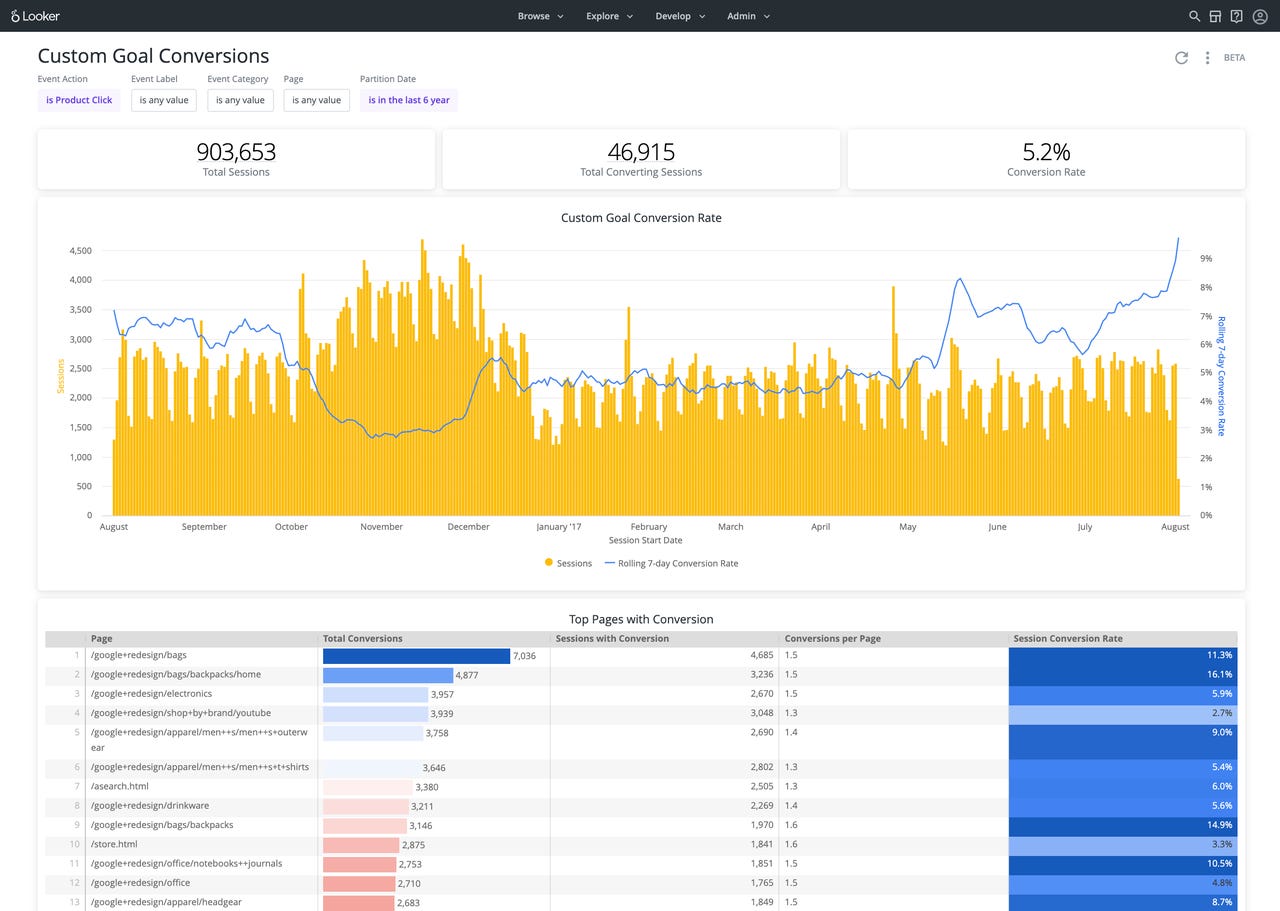Looker gets Google integration capabilities in post-acquisition release


Dashboard created using Looker Block for Google Analytics 360
Self-service and embedded BI platform Looker has a new release, its first since being acquired by Google. As part of the Google '20 NEXT OnAir event, the new Looker version ushers in features that integrate it more tightly with its parent's offerings. A number of non-Google-specific features -- in the areas of performance and developer functionality -- come along for the ride. These capabilities build on those in Looker 7, which was announced after the Google-Looker acquisition was revealed, but before it had closed.
Also read:
Features, features
The headline here is that a new Looker "Block" is being released today that integrates Looker with Google Marketing Platform (GMP), including Google Analytics 360 (shown in the figure above), Campaign Manager + Display & Video 360, and Search Ads 360, as well as Google Ads. The integration includes predictive analytics Activation Paths back into GMP, making that integration reciprocal.
In the non-Google department, Looker now supports cross-filtering in dashboards, and new Slack integration that provides the ability to ask questions of data, and receive the answers back, right in the Slack chat environment. New enhancements for Looker system administrators help them understand, analyze and control system activity; manage users and groups; and merge Looker-based permissions with those of corporate systems.
Performance improvements, developer platform enhancements
On the performance side, aggregated data is used more proactively, in order to speed up queries; Persistent Derived Tables (PDTs) can now be built concurrently, rather than one at a time; data downloads have been sped up; and Looker can now leverage JDBC connection pooling.
Looker developers get a brand new integrated development environment (IDE) for building LookML models, with an object browser and contextual metadata, among other new capabilities. Beyond the tooling, there's also a new Extension Framework, for building widgets and applications, and a new Data Dictionary, itself embeddable in external applications, which provides a UI to help business users find the fields and metrics they need. To round things out, the development framework, announced in November as part of Looker 7, is now generally available (GA).
Also read: Looker announces developer-friendly platform enhancements
Marketplace, and market competition
The Looker Marketplace has reached GA as well. The Marketplace accommodates Looker and its customers, by serving as the home for all Looker Blocks (including the Block for Google Marketing Platform) and facilitating deployment of custom applications both within customer organizations and to the entire Looker customer base.
With the GA of Marketplace, Looker continues its push as a platform for BI solutions, rather than exclusively serving as a BI/data visualization tool. And with the Google integrations, Looker is clearly targeting solutions based on its parent's marketing and ads platforms as a sweet spot. Will that put Google on par with the combination of Salesforce and Tableau, or Microsoft Azure and Power BI? While that remains to be seen, it's clear that Google is trying to align its stars in that configuration.